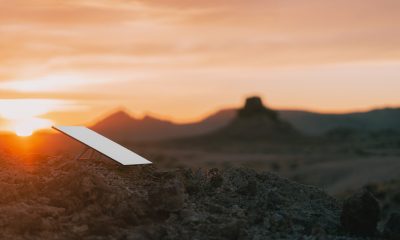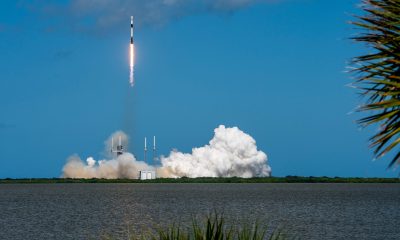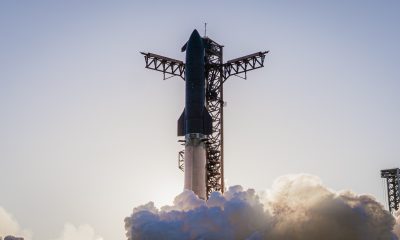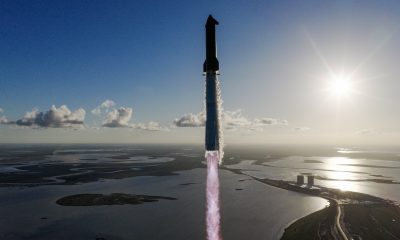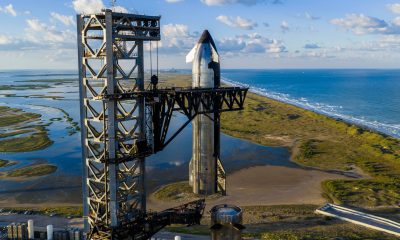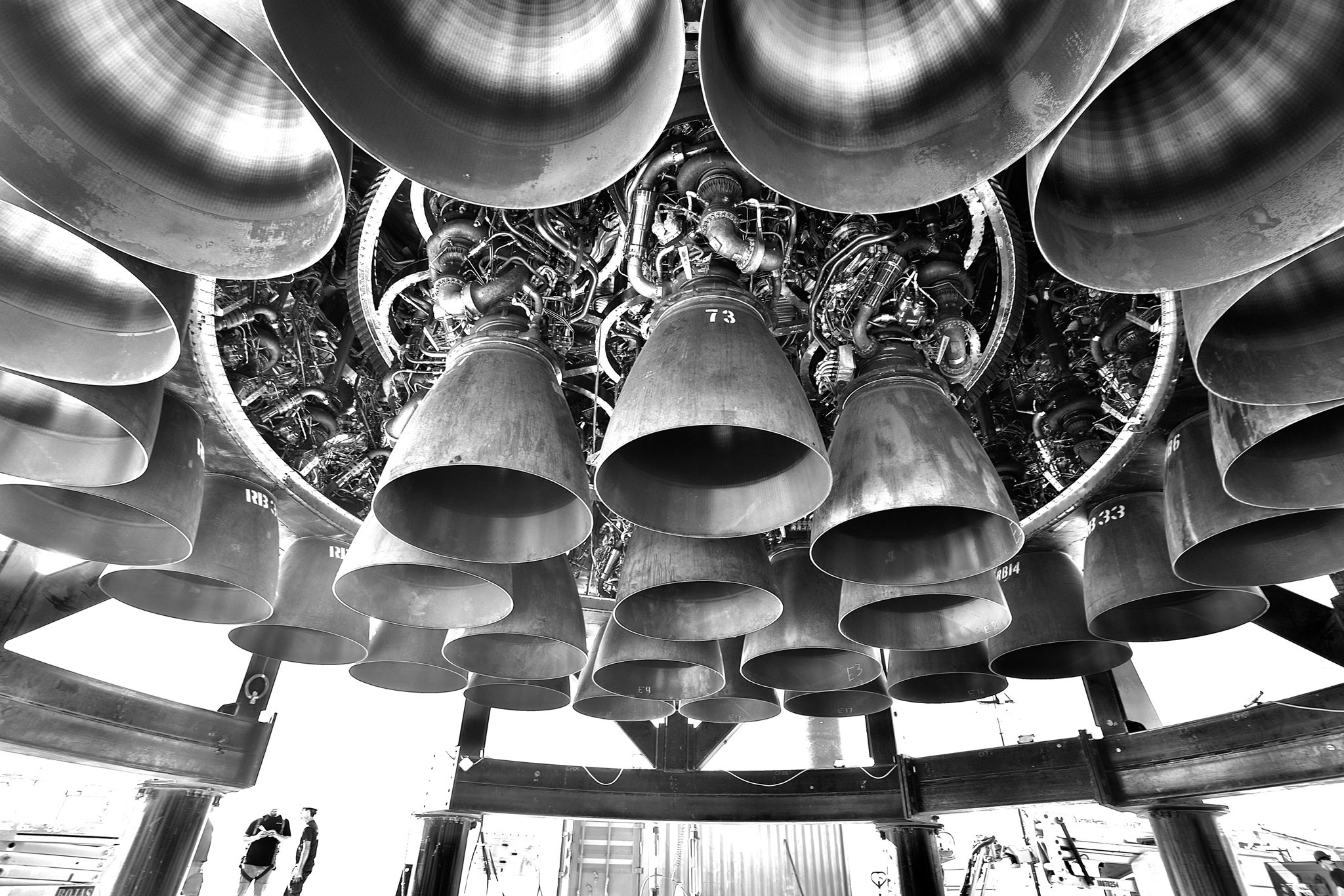
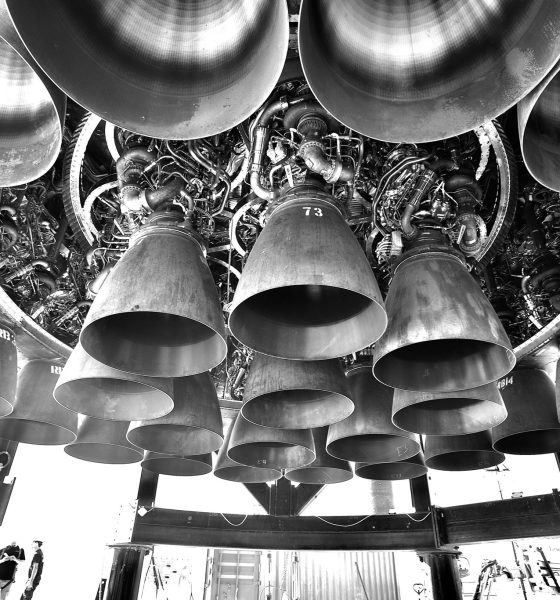
News
SpaceX making good progress towards Super Heavy static fire campaign
SpaceX appears to be making great progress towards the start of its first full Super Heavy static fire campaign, building upon extensive Starship testing and a single booster static fire completed in July 2021.
On May 14th, upgraded Super Heavy booster B7 was moved back to SpaceX’s South Texas Starbase Starship factory after completing a successful round of tests and smoothing out an otherwise rocky start to its life. It was not the booster’s first time on that journey: after first leaving the Starbase ‘nest’ on March 31st, Booster 7 suffered significant internal damage during a structural stress test on April 14th and was forced to return to the factory for repairs. Impressively, despite the cramped environment and extremely limited access to the interior of the Super Heavy’s primary and secondary propellant tanks, SpaceX engineers and technicians somehow completed those repairs and Booster 7 sailed through a new round of ‘cryoproof’ testing on May 9th and 11th.
In the ~20 days since its second return, SpaceX teams have been hard at work preparing Super Heavy B7 for its next major challenges – the results of which could determine whether the massive rocket helps launch a Starship into space later this year.
That goal, same as it has been for half a year, is to qualify the first Super Heavy booster for flight. To do so, SpaceX must – at long last – static fire a Super Heavy with all necessary Raptor engines installed. For Booster 7 and its near-term successors, that means 33 new “Raptor 2” engines capable of generating a total of ~7600 metric tons (~16.7M lbf) of thrust.
That’s exactly what SpaceX workers have been focused on doing since Booster 7’s second return to a Starbase assembly bay. Bit by bit, they have spent every day since installing Raptor 2 engines one at a time. Unfortunately, due to the Super Heavy’s relocation inside a brand new assembly building known as the Megabay, High Bay 2, or Wide Bay, the half-dozen or so unaffiliated photographers who have come to regularly photograph Starbase have yet to find an angle that shows the state of that engine installation progress.
Two weeks later, it’s clear that SpaceX is taking its time, which likely also implies that the company is simultaneously encasing Booster 7’s Raptors and engine section in shrouds that will protect them during static fire testing; as well as during launch, reentry, and landing if B7 makes it that far. That’s not guaranteed, however, and it could also simply be that installing 33 engines on the first attempt at installing any Raptor 2s on any rocket has proven much harder than expected.
On June 1st, CEO Elon Musk appeared to confirm that engines are still being installed on Super Heavy B7, but he also verified that “all Raptor 2 engines needed for [the] first orbital flight are complete.” That could include Starship S24, which needs three sea-level Raptor 2s and three vacuum-optimized Raptor 2s, but it’s still great news even if he only means it for Booster 7. SpaceX has been spotted delivering at least a handful of new Raptor 2 engines a week for the last month or two, which means that all 33 engines may already be onsite at Starbase. If some are still undergoing proof testing at SpaceX’s McGregor, Texas facilities, it could be a few more weeks before all necessary engines are onsite, but that milestone is likely close at hand if it hasn’t already been reached.
For Super Heavy Booster 4, which was inexplicably never static-fired, installation of all 29 of its Raptor 1 engines took just a few days, but the installation of a heat shield around those engines took at least a few weeks. On June 1st, SpaceX also began installing grid fins on Super Heavy B7, further indicating the company’s growing confidence in the booster.
Outside of booster outfitting, SpaceX has also been aggressively refilling the Starbase orbital launch site’s (OLS) massive tank farm, which is capable of storing, subcooling, and distributing thousands of tons of liquid oxygen (LOx), liquid methane (LCH4), liquid nitrogen (LN2), and a variety of gases. For a full wet dress rehearsal (WDR), which has also never been done with Super Heavy, SpaceX would need to fill the booster with around 3400 tons (7.5M lb) of propellant. Out of an abundance of caution, Super Heavy B7 will likely have far less propellant aboard during almost all of its static fire tests, but a full static fire with a full load of propellant – simulating most prelaunch conditions – will likely be one of the last main goals of any static fire campaign. At full thrust, 33 Raptor 2 engines will likely burn around 25 tons (~55,000 lb) of propellant per second, so a huge amount of propellant will be needed regardless.
In the same series of June 1st tweets, Musk also confirmed that SpaceX intends to proceed cautiously into its first true Super Heavy static fire campaign, testing engines “just one at a time at first.” Musk probably isn’t being literal, as a campaign in which Booster 7 tested every one of its 33 Raptors individually could easily take weeks, so it’s likely safe to interpret his words to mean that SpaceX is not going to leap straight from the first limited test of one or a few engines to all 13 center engines, all 20 outer ‘boost’ engines, or all 33 engines at once.
Almost three weeks into the process of engine and heat shield installation, Booster 7 could potentially be ready to return to the orbital launch site any day now, though there’s probably an equal chance that it’s still a few weeks away. Nonetheless, SpaceX is on the cusp of kicking off one of the most exciting and important test campaigns in the history of Starship.
News
Tesla’s biggest rival in China reported a big profit decline once again
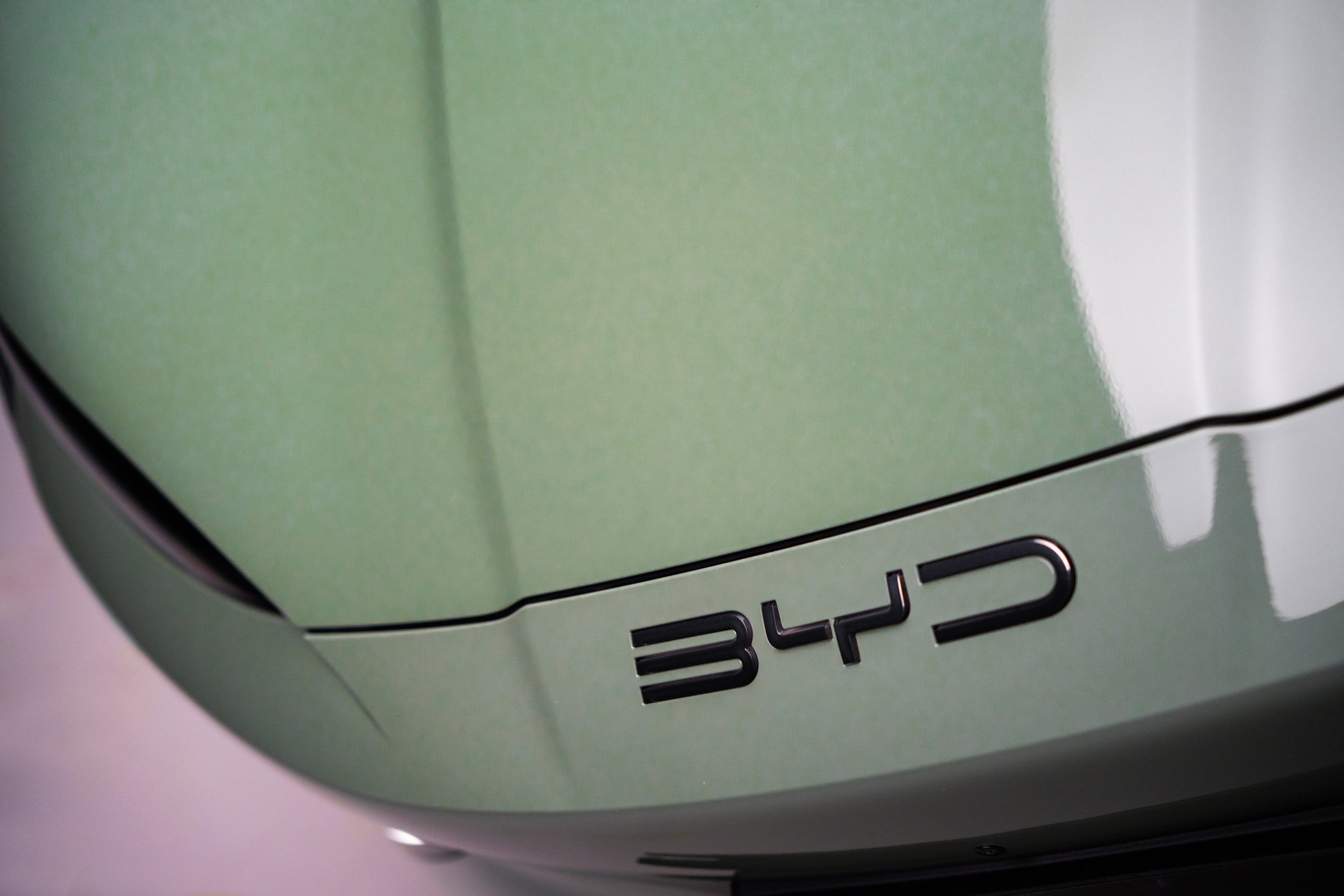
Tesla’s biggest rival in China reported a big decline in its profitability for the second straight quarter, and a loss of one-third compared to the same quarter last year.
BYD overtook Tesla as the best-selling EV maker in China in the fourth quarter of 2023, finally surpassing the company in terms of sales in the region.
Is Tesla really losing to BYD, or just playing a different game?
The Chinese market is one of the most competitive in the world, especially for EVs, as the industry is healthy with young and scrappy companies looking to sell the best possible tech in their vehicles.
BYD reported its earnings on Thursday and said that its profit had slumped by 33 percent compared to the same quarter last year. For this year’s third quarter, BYD reported a net profit of 7.8 billion yuan ($1.1 billion), a 32.6 percent decrease compared to the same period in 2024.
Its revenue was 195 billion yuan ($27.4 billion), which was only a 3 percent decrease compared to Q3 2024.
The drop in profits and revenue can mostly be attributed to the ongoing growth of competition in the Chinese market. The increased competition in China has pushed companies to turn to overseas markets in response, according to CnEVPost.
BYD is one of those companies, and it is attempting to push sales upward by entering new markets, especially in Europe, where the company sold more than 13,000 units in EU countries in September alone.
This was a 272 percent increase year over year, a major piece of evidence that it has a lot of potential in foreign markets.
The drop in financial figures is likely a short-term issue for BYD, as it has already established itself as a formidable competitor to many companies in many markets. In Q1, it reported an increase in profit by 100 percent compared to the same time span the year prior.
As it works to expand to even more markets in the world, it will continue to build upon its already-solid reputation.
News
GM takes latest step to avoid disaster as EV efforts get derailed
There was an even larger step taken this morning, as the Detroit Free Press reported that GM was idling its Factory Zero plant in Michigan until late November, placing about 1,200 workers on indefinite layoff status.
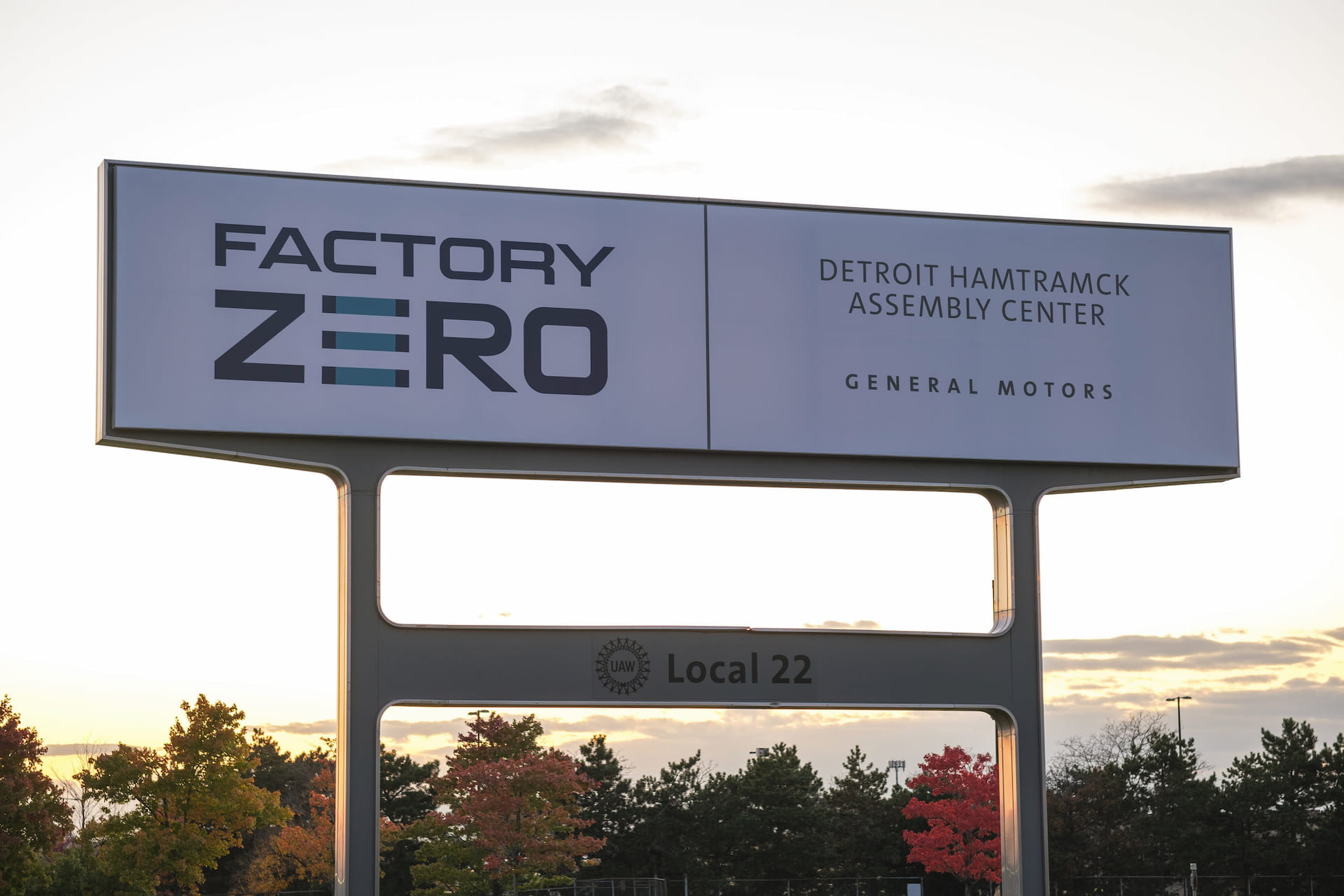
General Motors has taken its latest step to avoid financial disaster as its electric vehicle efforts have been widely derailed.
GM’s electric vehicle manufacturing efforts started off hot, and CEO Mary Barra seemed to have a real hold on how the industry and consumers were starting to evolve toward sustainable powertrains. Even former President Joe Biden commended her as being a major force in the global transition to EVs.
However, the company’s plans have not gone as they’ve drawn them up. GM has reported some underwhelming delivery figures in recent quarters, and with the loss of the $7,500 tax credit, the company is planning for what is likely a substantial setback in its entire EV division.
Earlier this month, the company reported it would include a $1.6 billion charge in its quarterly earnings results from EV investments. It was the first true sign that things with GM’s EV projects were going to slow down.
There was an even larger step taken this morning, as the Detroit Free Press reported that GM was idling its Factory Zero plant in Michigan until late November, placing about 1,200 workers on indefinite layoff status.
This is in addition to the 280 employees it has already laid off after production cuts that happened earlier this year at the Detroit-Hamtramck plant.
After November 24, GM will bring back 3,200 people to work until January 5 to operate both shifts. On January 5, GM is expected to keep 1,200 workers on indefinite layoff.
GM is not the only legacy automaker to make a move like this, as Ford has also started to make a move that reflects a cautious tone regarding how far and how committed it can be to its EV efforts.
After the tax credit was lost, it seemed to be a game of who would be able to float their efforts longest without the government’s help. Tesla CEO Elon Musk long said that the loss of these subsidies would help the company and hurt its competitors, and so far, that is what we are seeing.
Elon Musk was right all along about Tesla’s rivals and EV subsidies
However, Tesla still has some things to figure out, including how its delivery numbers will be without the tax credit. Its best quarter came in Q3 as the credit was expiring, but Tesla did roll out some more affordable models after the turn of the quarter.
News
Tesla expands Robotaxi geofence, but not the garage
This has broadened its geofence to nearly three times the size of Waymo’s current service area, which is great from a comparative standpoint. However, there seems to be something that also needs to be expanded as the geofence gets larger: the size of the Robotaxi fleet.
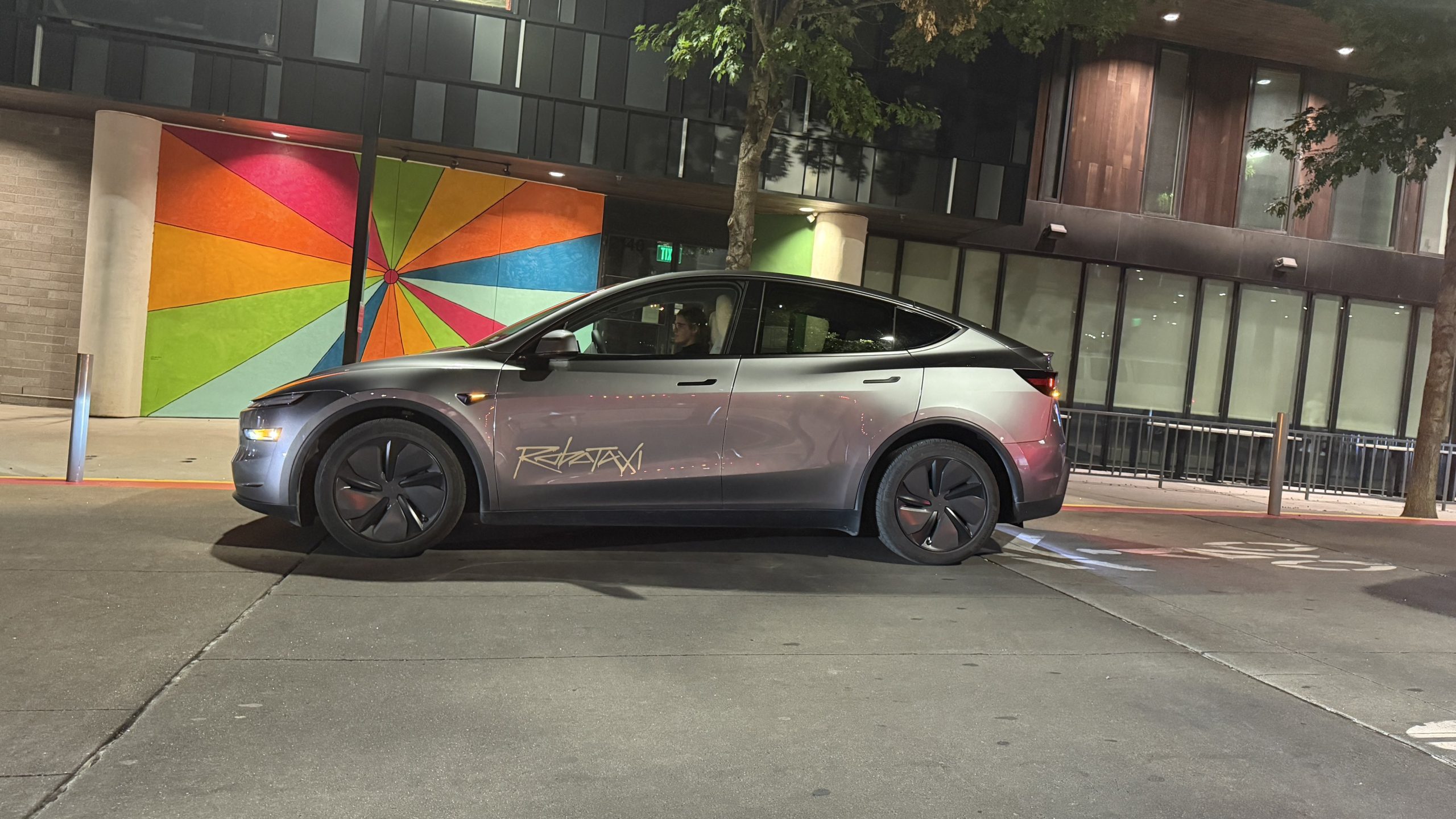
Tesla has expanded its Robotaxi geofence four times, once as recently as this week.
However, the company has seemingly kept its fleet size relatively small compared to the size of the service area, making some people — even pro-Tesla influencers — ask for more transparency and an expansion of the number of vehicles it has operating.
Over the past four months, Tesla has done an excellent job of maintaining growth with its service area in Austin as it continues to roll out the early stages of what is the Robotaxi platform.
The most recent expansion brought its size from 170 square miles (440.298 sq. km) to 243 square miles (629.367 sq. km).
Tesla sends clear message to Waymo with latest Austin Robotaxi move
This has broadened its geofence to nearly three times the size of Waymo’s current service area, which is great from a comparative standpoint. However, there seems to be something that also needs to be expanded as the geofence gets larger: the size of the Robotaxi fleet.
Tesla has never revealed exactly how many Model Y vehicles it is using in Austin for its partially driverless ride-hailing service (We say partial because the Safety Monitor moves to the driver’s seat for freeway routes).
When it first launched Robotaxi, Tesla said it would be a small fleet size, between 10 and 20 vehicles. In late August, after its second expansion of the service area, it then said it “also increased the number of cars available by 50 percent.”
The problem is, nobody knows how many cars were in the fleet to begin with, so there’s no real concrete figure on how many Robotaxis were available.
This has caused some frustration for users, who have talked about the inability to get rides smoothly. As the geofence has gotten larger, there has only been one mentioned increase in the fleet.
Trying to book a RoboTaxi in the new geofence and can’t get paired with a car.
Really think Tesla needs to add more cars to the fleet in Austin. Has become tougher and tougher to use the service reliably @elonmusk pic.twitter.com/KHqea3oUxU
— Farzad (@farzyness) October 29, 2025
Tesla did not reveal any new figures or expansion plans in terms of fleet size in the recent Q3 Earnings Call, but there is still a true frustration among many because the company will not reveal an exact figure.
-

 Elon Musk2 weeks ago
Elon Musk2 weeks agoSpaceX posts Starship booster feat that’s so nutty, it doesn’t even look real
-

 Elon Musk2 weeks ago
Elon Musk2 weeks agoTesla Full Self-Driving gets an offer to be insured for ‘almost free’
-

 News2 weeks ago
News2 weeks agoElon Musk confirms Tesla FSD V14.2 will see widespread rollout
-

 News2 weeks ago
News2 weeks agoTesla is adding an interesting feature to its centerscreen in a coming update
-

 News2 weeks ago
News2 weeks agoTesla widens rollout of new Full Self-Driving suite to more owners
-

 Elon Musk2 weeks ago
Elon Musk2 weeks agoTesla CEO Elon Musk’s $1 trillion pay package hits first adversity from proxy firm
-

 News2 weeks ago
News2 weeks agoTesla might be doing away with a long-included feature with its vehicles
-
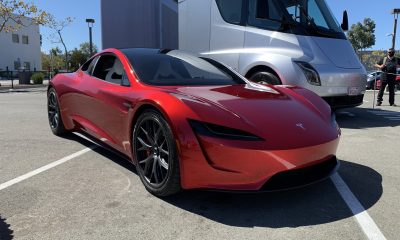
 News1 week ago
News1 week agoTesla updates fans on its plans for the Roadster


